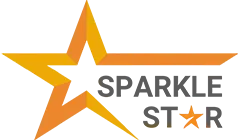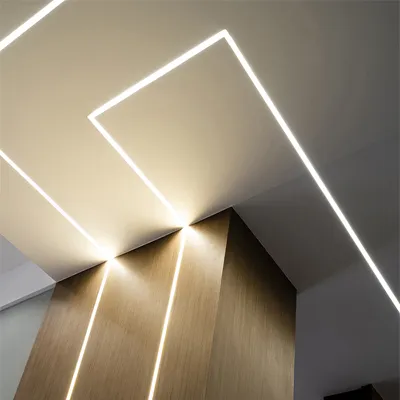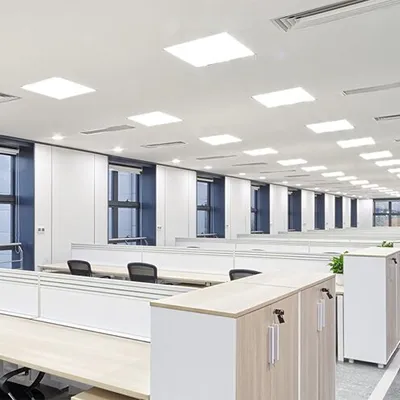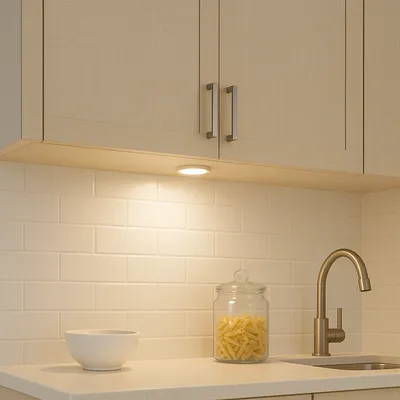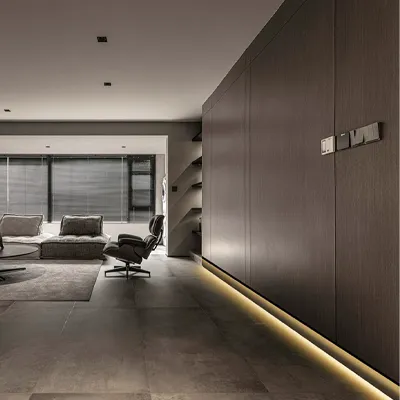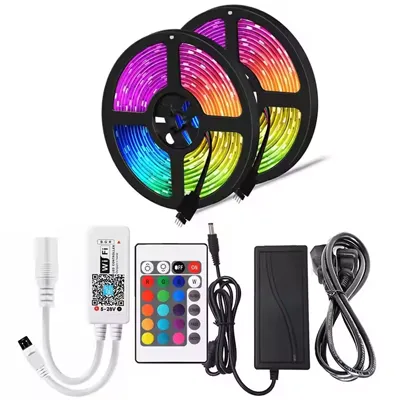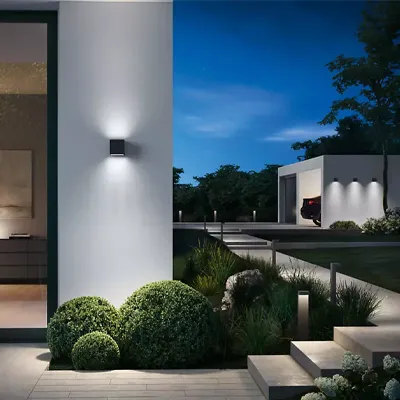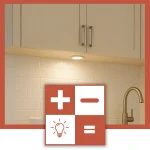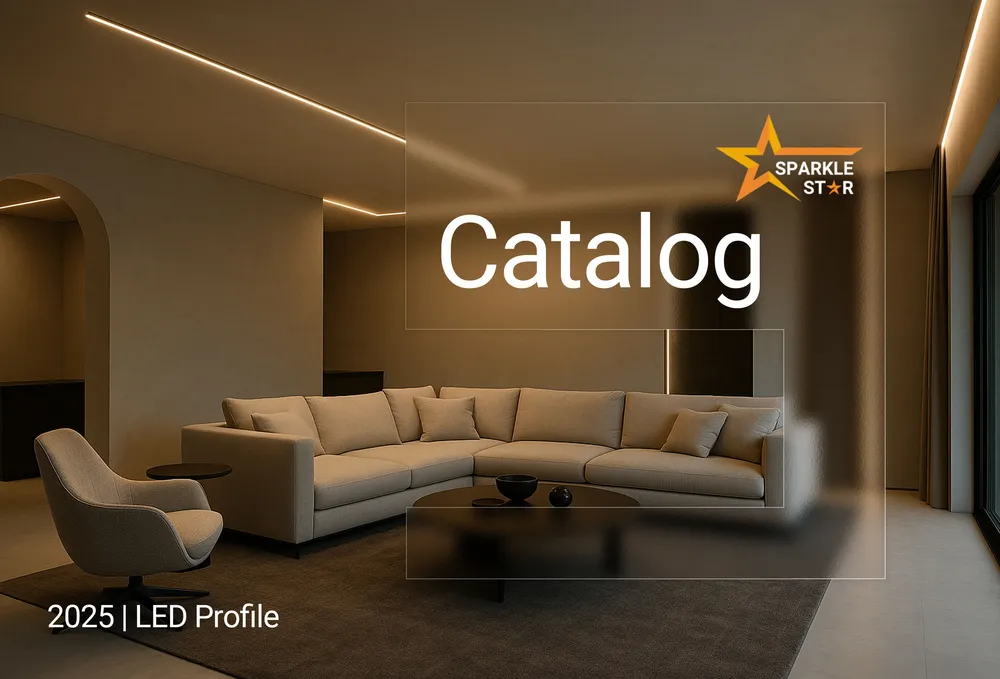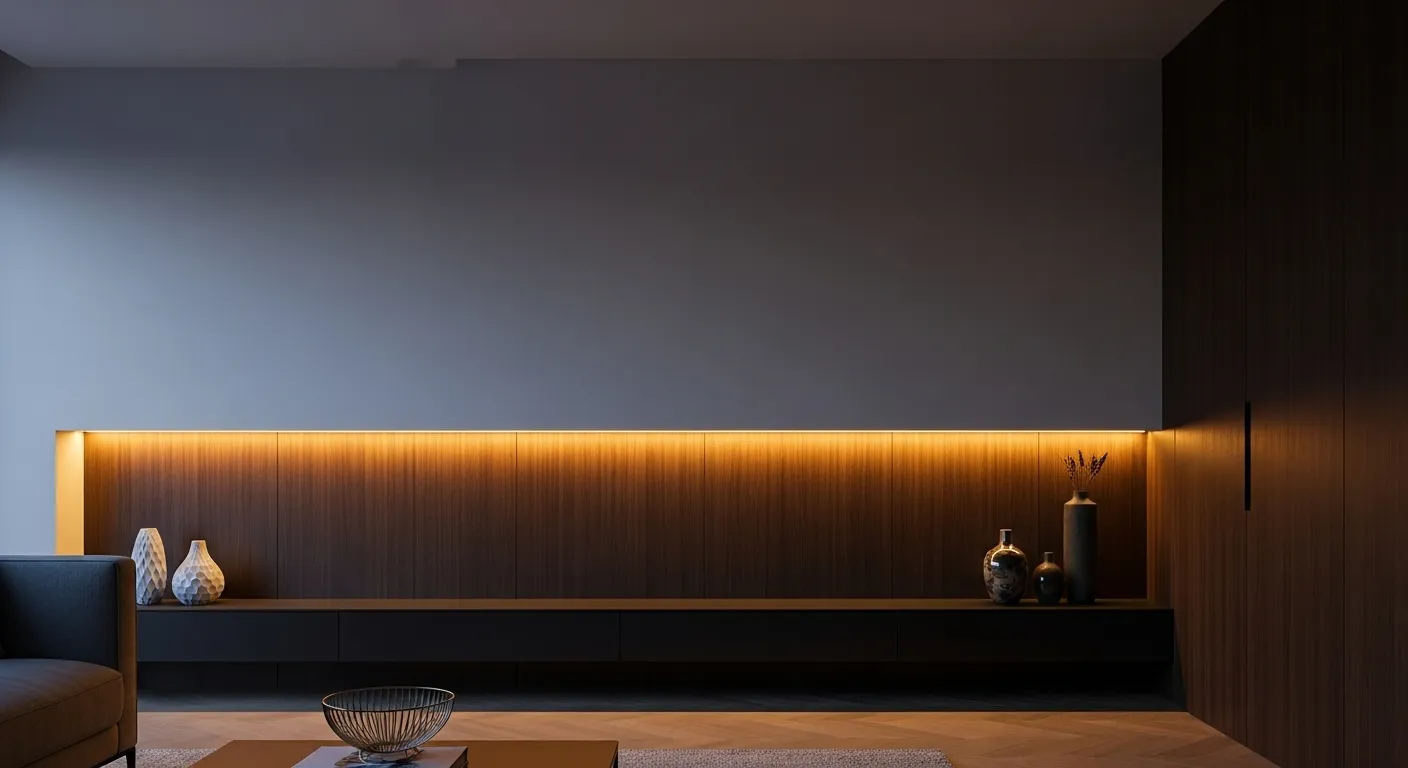
The answer to which LED profile is best is defined by the application. For a clean, trimless architectural finish in drywall, a Plaster-In Deep Profile is superior. Under cabinets, a 45-Degree Corner-Mount Profile excels at directing task light and minimizing glare. For any outdoor installation, a sealed IP67-Rated Profile is required to protect components from weather and ensure operational life.
Quick Recommendations Table
Application | Best Profile Type | Primary Advantage |
|---|---|---|
Recessed Drywall | Plaster-In Deep Profile | Creates a completely seamless, architectural look. |
Under-Cabinet | 45-Degree Corner-Mount | Reduces glare on countertops. |
Cove & Indirect | Standard U-Shape Surface | Cost-effective for hidden locations. |
Outdoor & Wet Areas | IP67 Rated Sealed Profile | Ensures protection against water and dust. |
Retail & Display | Profile with Asymmetric Lens | Focuses light directly onto products. |
Best LED Profile for Recessed Drywall
The goal here is a clean, architectural line of light. But how "clean" do you want to go? Your choice is between making the fixture seem like part of the wall, or simply setting it neatly within the wall.
Plaster-In (Trimless/Mud-In) Profile

Choose this when the objective is to make the aluminum housing completely disappear. You want the light to look like a deliberate, perfect slot cut directly into the drywall.
This profile is designed with perforated flanges that extend out to the sides. This isn't just for mounting; it's to give drywall compound something to grip. Your installer will tape and mud directly over these flanges, feathering the compound into the surrounding surface.
Pro Tip:
The secret to the "invisible" effect lies in the finish work. After the compound dries, a final, careful sanding is what blends the profile's edge into the wall. This step is what makes the metal frame truly vanish, leaving only a pure line of light.
Recessed Profile with Flange
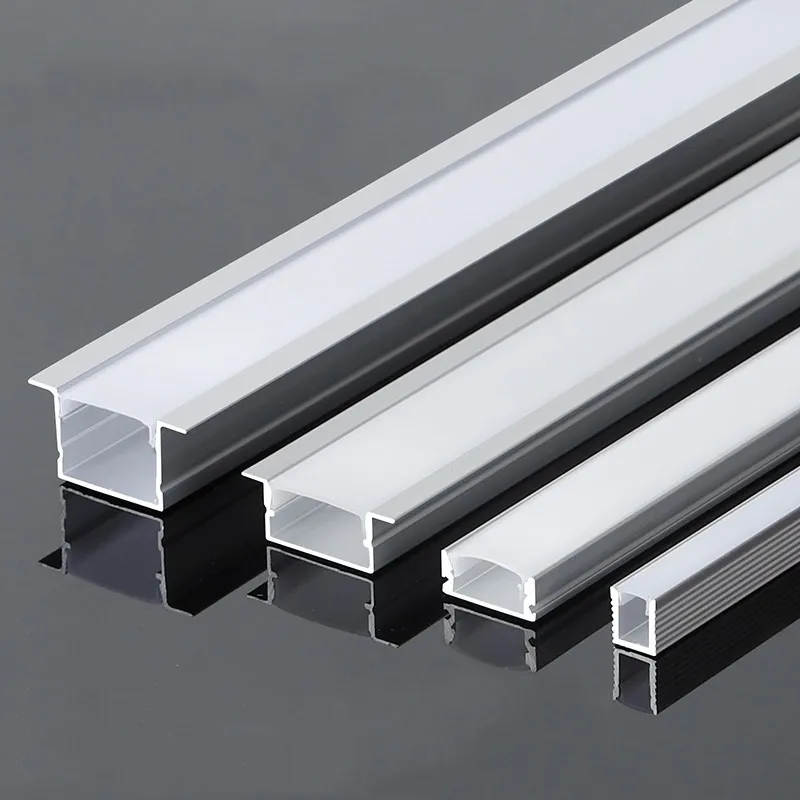
This is the practical, workhorse solution for most recessed applications. It provides a crisp, clean look without demanding the same level of precision as a trimless installation.
These profiles have a distinct lip, or flange, that rests on top of the drywall surface. Its function is simple and brilliant: it covers the raw edge of your cutout. If the cut isn't perfectly straight, the flange hides the imperfection. This makes installation faster and more forgiving, resulting in a neatly framed slot of light.
Best LED Profile for Under Cabinet Lighting
Good under-cabinet lighting isn't just about brightness; it's about control. You need light on the counter, not in your eyes, and definitely not as a series of distracting dots reflected in the granite.
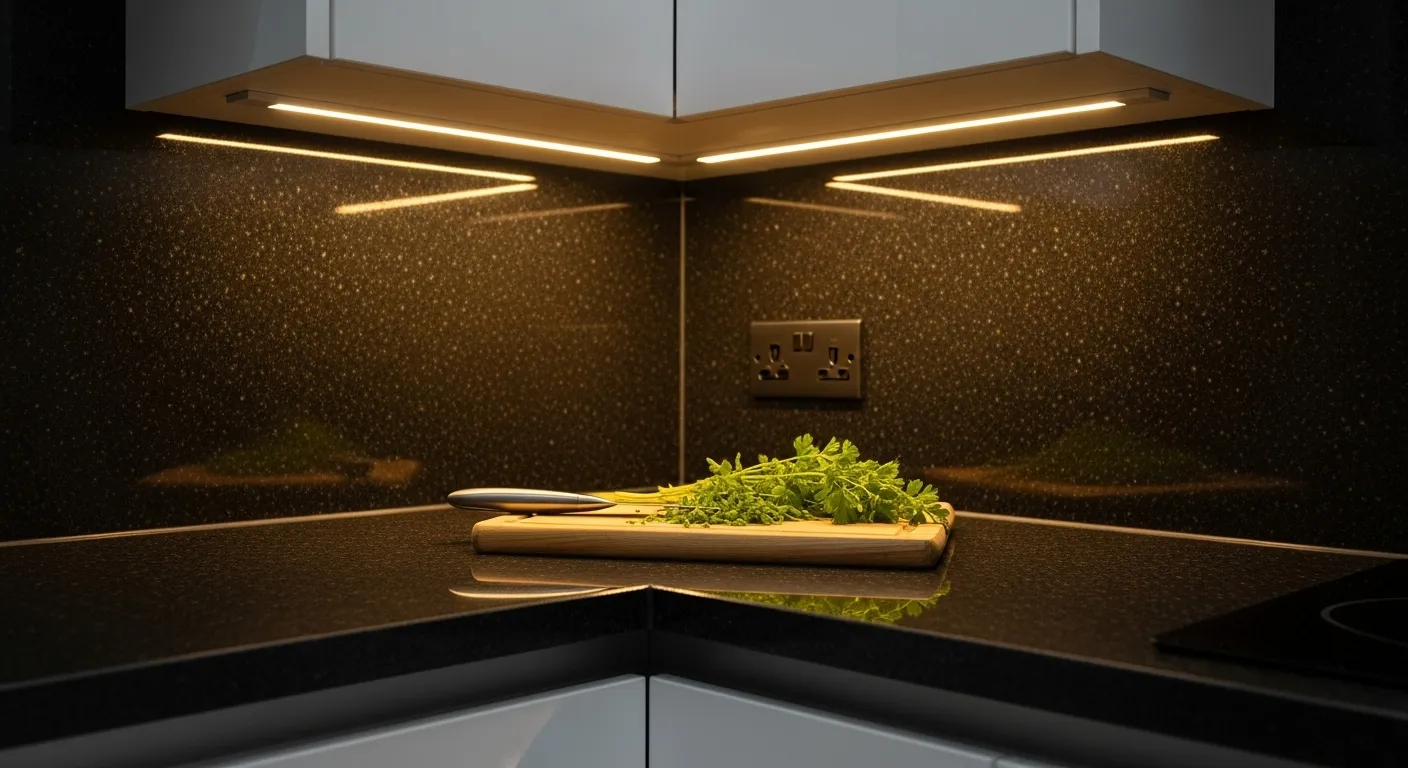
Corner-Mounted Profile (45-Degree)
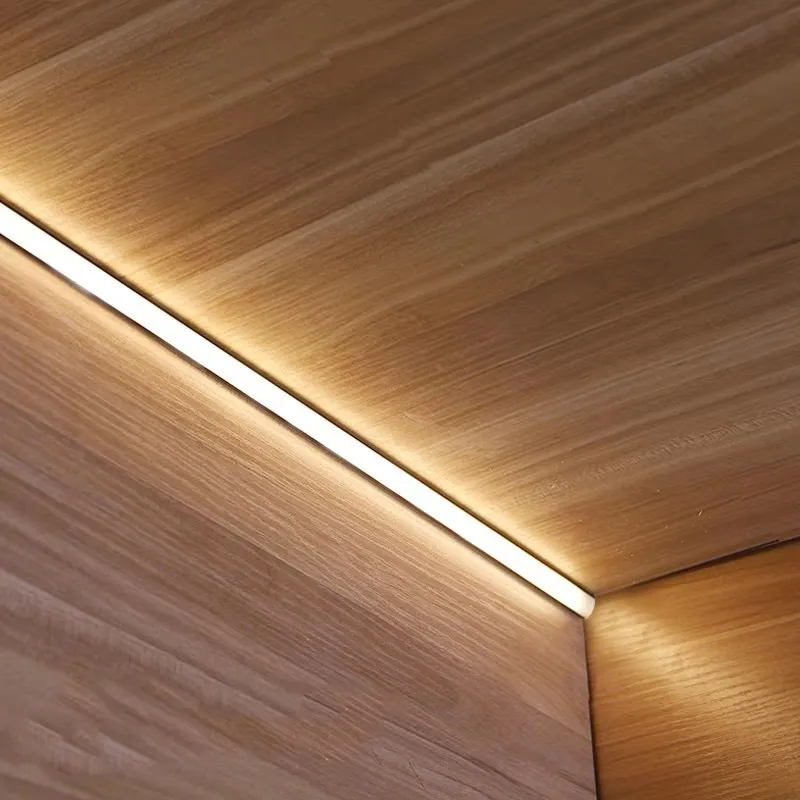
This is the superior choice for almost any kitchen design. Its placement in the corner where the cabinet meets the backsplash is a calculated move.
By sitting at a 45-degree angle, it directs light downwards and backwards, centered on the workspace. This does two things perfectly. It illuminates the task area, and it keeps the light source aimed away from the eyeline of anyone seated at a nearby table or island. It solves the glare problem before it even starts.
Surface-Mounted U-Shape Profile
This is the standard, easy-to-install option. It mounts flat against the bottom of the cabinet and directs light straight down.
While straightforward, it comes with a major caveat. If your client has polished stone or any glossy countertop, this profile will turn that surface into a mirror, reflecting every individual LED. It's a risk that often isn't worth taking. Reserve this profile for matte countertops, or situations where a cabinet lip will completely hide the fixture from all viewing angles.
Technical Warning:
On a glossy countertop, an opal or frosted diffuser is not a suggestion; it's a requirement. Using a clear cover is a common mistake that creates a cheap-looking "dotted" reflection. It can undermine the perceived value of an expensive kitchen renovation.
Best LED Profile for Cove Lighting
In cove lighting, the fixture is always hidden. The audience never sees the profile; they only see its effect—a soft, ambient glow washing across the ceiling. This changes the selection criteria entirely. The focus shifts from aesthetics to pure performance.
Standard Surface-Mounted Profile
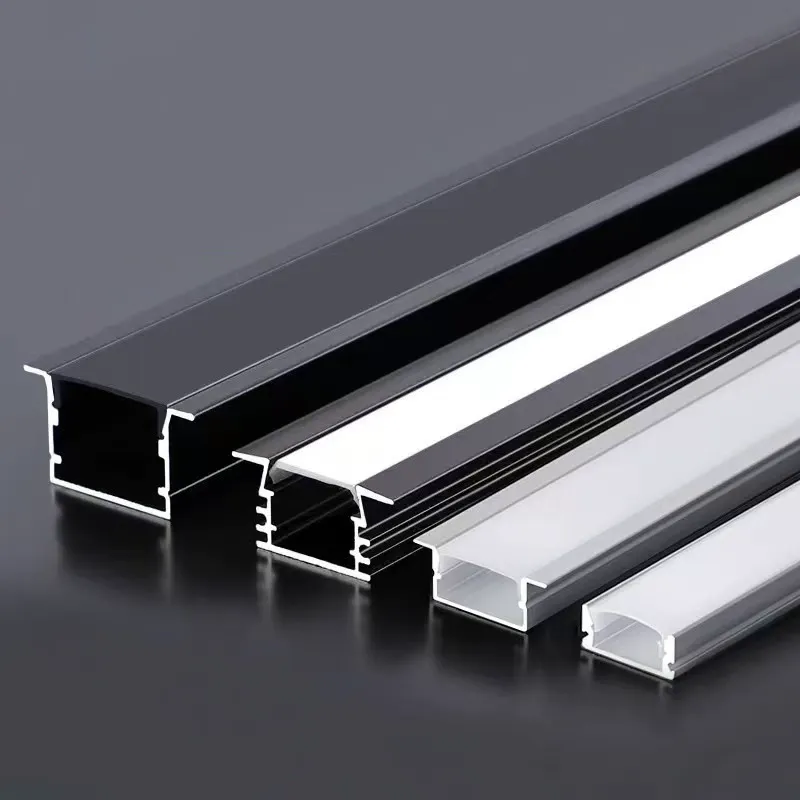
This is the intelligent, cost-effective choice for most cove applications. Since the profile itself is concealed, there is no reason to pay a premium for a complex or architecturally beautiful design. A simple, robust U-shape profile does the job perfectly.
Its two essential functions here are providing a solid heat sink for the LED strip to ensure its longevity, and acting as a dust cover to keep the diodes clean. When selecting a diffuser for a hidden cove, the goal is maximum light output, not diffusion, as the ceiling surface will do the work of softening the light.
Pro Tip:
For cove lighting, use a clear diffuser. It offers the best light transmission, maximizing system efficiency. An opal diffuser in this scenario is unnecessary and will only waste lumens by trapping light inside a fixture no one can see.
Specialized Asymmetric Cove Profile
Consider this profile when you need more control or are working with challenging architecture, such as a very shallow cove or an unusually high ceiling.
A standard profile lets light spill out passively. An asymmetric profile acts like a scoop, actively directing the light out of the cove and throwing it further across the ceiling. It features a specially designed reflector or lens that casts light preferentially to one side. This results in a more even wash of light and better performance, especially when you need to push light a long distance from a tight space.
Best LED Profile for Outdoor Applications
Selecting a profile for outdoor use is about one thing: survival. The fixture must withstand water, dust, impacts, and UV radiation from the sun. The key to making the right choice is understanding the environment and matching it to the correct Ingress Protection (IP) rating.
Floor/Inground Rated Profile (IP67)
This is the required specification for any application where water can pool or where the fixture will be walked on, such as pathways, decks, and patios.
An IP67 rating means the profile is dust-tight and can withstand temporary immersion in water. It will survive heavy rain, sprinkler systems, and sitting in a puddle. These profiles are built for durability, with thick aluminum housings and robust diffusers designed to handle foot traffic. They are essential for any ground-level or in-ground linear lighting.

H3: Waterproof Sealed Profile (IP65)
Think of IP65 as "weather-resistant" rather than "submersible." This is the appropriate choice for vertical surfaces or under eaves—areas that will get wet from rain but where water will not collect.
An IP65-rated profile is sealed against dust and can handle water jets from any direction, making it perfectly suitable for wall-mounted accent lighting or soffit installations. It provides robust protection for most outdoor applications that are not at ground level.
Technical Warning:
A common and costly mistake is assuming an IP-rated LED strip is all you need. An outdoor system is only as strong as its weakest link. The profile, the end caps, the connectors, and the LED strip must all be appropriately rated and meticulously sealed to prevent failure. Using non-UV-stabilized diffusers is another critical error, as they will yellow and become brittle in sunlight within a year.
How to Select the Right LED Profile
Choosing the right profile moves beyond specific applications and into the core principles of lighting design. Understanding these three technical factors is what separates a professional, lasting installation from one that fails prematurely.
Evaluate Thermal Management
This is the most critical technical decision you will make. An LED is not a light bulb; it's a sensitive electronic component. Heat is its primary enemy.
An aluminum profile's main job, besides looking good, is to act as a heat sink. It pulls heat away from the LED chips and dissipates it into the air. Without this process, the LEDs will overheat, leading to a rapid loss of brightness and a shortened lifespan. A quality profile made from 6063-T5 aluminum can literally double the effective life of an LED strip.
Key Data:
Do not use lightweight, minimalist profiles for high-output LED strips (typically those over 15 watts per meter). They lack the necessary aluminum mass to manage the thermal load. Always check the profile manufacturer's specification for its maximum power handling capacity.
Solve for a Dotless Appearance
The "hotspot" or "dotted" look of a bare LED strip is generally considered undesirable in finished spaces. Achieving a smooth, homogenous line of light is a balancing act between three factors:
- LED Strip Density: The closer the LEDs are to each other, the easier they are to blend. High-density strips (120+ LEDs/meter) are easier to diffuse than low-density ones. For a guaranteed dotless finish from the source, specify a COB (Chip on Board) LED strip, which produces a single, uninterrupted line of light.
- Profile Depth: The distance from the LED chip to the diffuser is crucial. A deeper profile creates a mixing chamber for the light, allowing the individual points to blend before hitting the diffuser. Shallow profiles make achieving a dotless look much more difficult.
- Diffuser Opacity: An opal or "milky" diffuser provides the best diffusion but comes at the cost of brightness, often reducing light output by 30-40%. A frosted diffuser is a compromise, while a clear diffuser offers no diffusion at all.
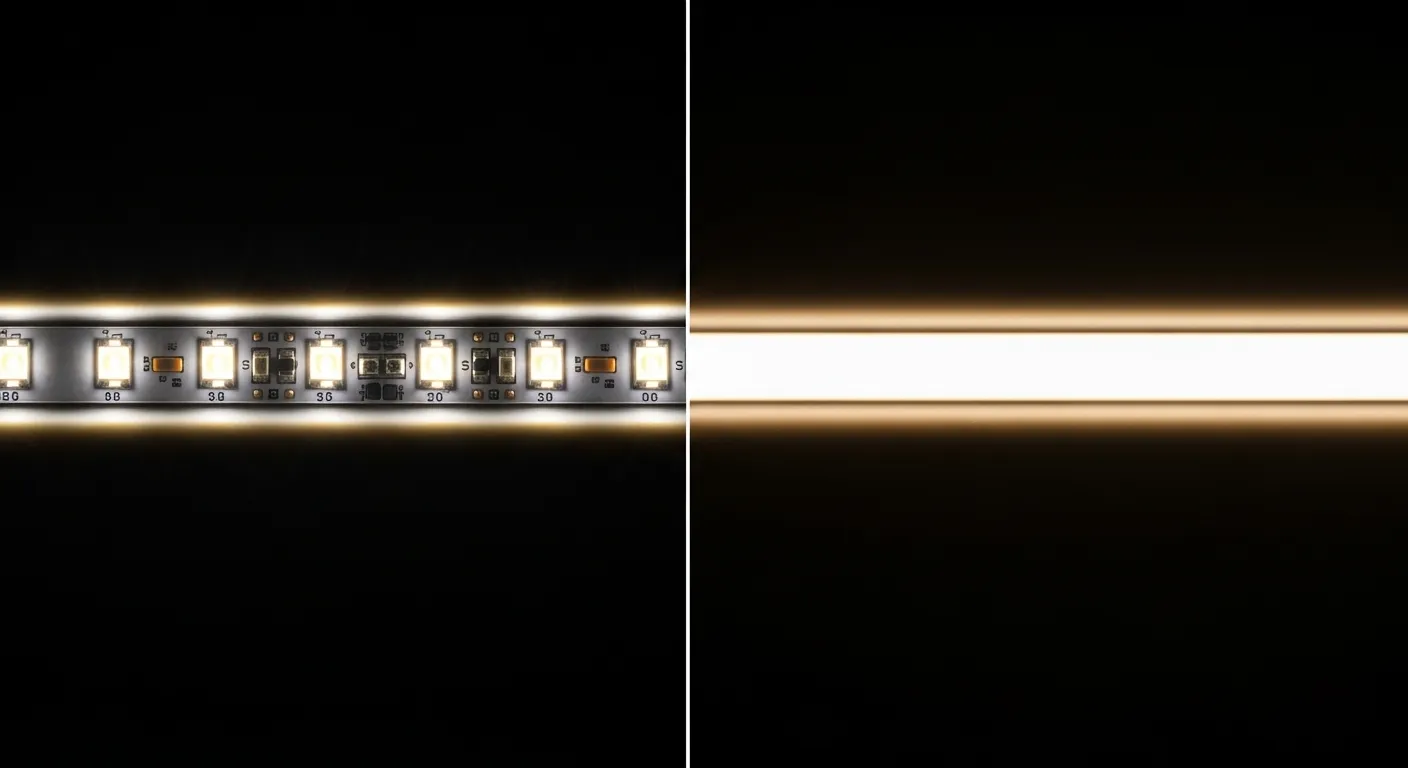
Assess Materials and Durability
The long-term performance of a profile depends on the quality of its materials. Look for two key specifications.
First is the aluminum itself. A high-quality anodized finish is essential for preventing corrosion, especially in humid environments. The anodized layer is a hard, protective skin that seals the aluminum.
Second is the diffuser material. Polycarbonate (PC) is the superior choice for durability due to its high impact resistance. While PMMA (acrylic) can offer slightly better optical clarity, it is more brittle and can be prone to cracking. For outdoor use, ensuring the PC diffuser is UV-stabilized is non-negotiable.
What Are Common Installation Mistakes?
Even the best components will fail if installed incorrectly. Here are the most common errors that can compromise a professional lighting project:
- Forcing the Wrong Strip: Trying to squeeze a 10mm wide LED strip into a profile designed for an 8mm strip will damage the components and create hot spots from poor heat contact. Always check internal width.
- Ignoring the Driver: Placing the LED driver in a location with no ventilation, like a cramped, insulated ceiling cavity, will cause it to overheat and fail. Drivers need air circulation to function reliably.
- Relying on Adhesive Alone: The adhesive backing on an LED strip is for initial positioning only. In vertical or inverted installations, it will eventually fail. For a secure, permanent bond, ensure the strip is held by the profile's design or supplemented by a neutral-cure silicone.
- Poor Wire Management: Unsecured or poorly soldered connections are a primary point of failure. Ensure all connections are solid, insulated, and have strain relief to prevent wires from being pulled from the solder pads.
- Imprecise Cutting: Using the wrong tools to cut profiles results in messy, angled edges that create light leaks and prevent end caps from fitting correctly. A miter saw with a non-ferrous blade provides the best results.
Conclusion
We began with a simple question: which LED profile is best? The answer, it turns out, is not a specific product. The best profile is the one that is correctly specified for a particular job. It is the result of a deliberate selection process, not a lucky guess from a catalog.
The optimal choice is always a system where the architectural goal, the required light quality, and the technical demands of the components are in perfect balance. The aluminum profile is the critical component that integrates these three needs. Your role as a professional is to be that integrator, making informed trade-offs to achieve the desired outcome.
Ultimately, the evolution of the LED profile reflects a fundamental shift in our industry. Light is no longer just an element we add to a space; it is a material we build with. As profiles become smaller, smarter, and more integrated, they empower us to design with light in ways that were previously unimaginable. Mastering their selection is fundamental to modern architectural design.
Frequently Asked Questions
Can you cut aluminum LED profiles?
Yes, aluminum profiles can be cut to a specific length. For the cleanest result, use a miter saw fitted with a non-ferrous metal blade. The plastic diffuser should be cut separately with a fine-toothed hand saw or power tool on a low-speed setting to prevent the material from cracking or melting.
Is it possible to paint an LED profile?
Yes, but direct painting on the standard anodized finish is not recommended as it will not adhere well. For a durable, custom color, the surface must first be lightly scuffed with fine-grit sandpaper and then treated with a self-etching primer. After priming, most high-quality spray or brush-on paints can be applied.
How do you connect profiles for a long, continuous run?
For seamless long runs, use the manufacturer's specific joining hardware. These are typically small metal plates or inserts that align two profiles perfectly from the inside, ensuring a straight line. If connectors are not available, ensuring both profiles have a perfectly square miter cut is critical to creating a tight butt joint that minimizes any light leak.
Should I always use COB strips instead of SMD?
Not necessarily. COB strips are the best solution when a perfectly dotless appearance is the absolute top priority, especially in shallow or directly visible profiles. However, high-density SMD strips often offer higher brightness options (wattage) and can be more cost-effective, achieving an excellent dotless effect when correctly paired with a deep profile and opal diffuser.
